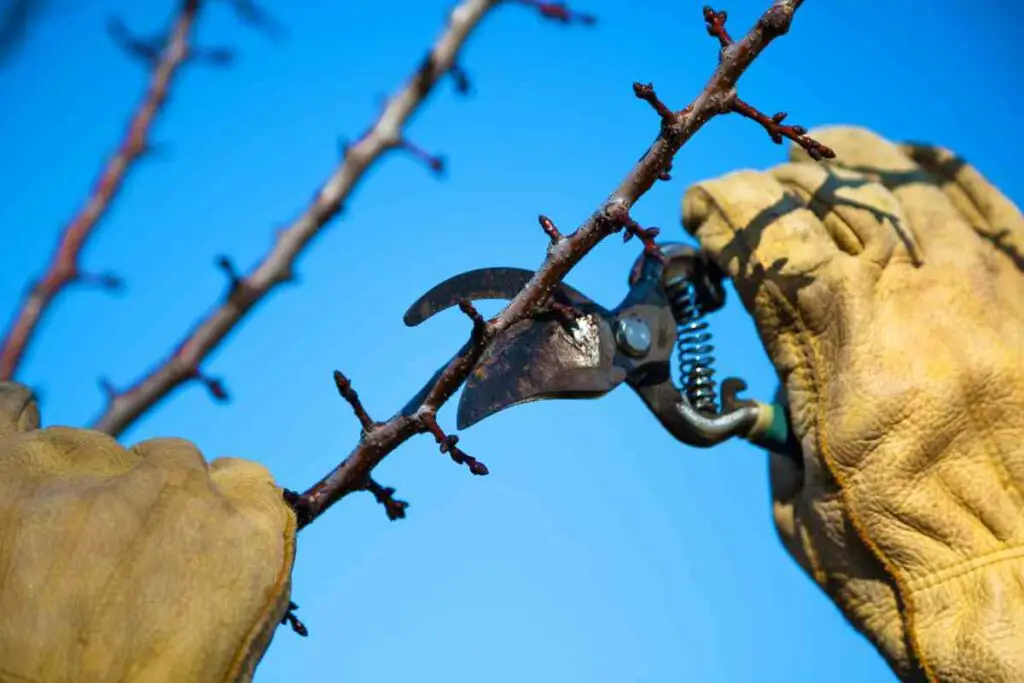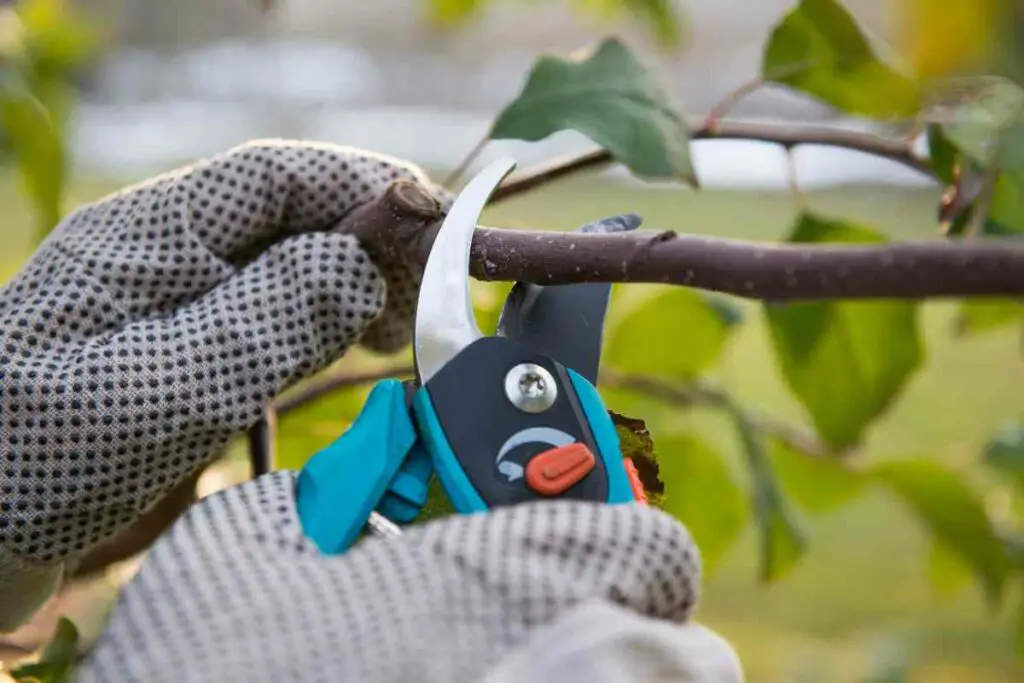Pruning fruit trees in the winter can help improve the health and productivity of the tree. It is important to prune at the right time of year to minimize stress on the tree and promote healing.
In general, the best time to prune fruit trees is during the dormant season, which is typically in late winter or early spring. Here are some steps for pruning fruit trees in the winter:
- Start by removing any dead, diseased, or damaged branches. These can harbor pests or diseases that can spread to the rest of the tree.
- Next, thin out any overcrowded or crossing branches. This will help improve air circulation and sunlight penetration to the inner parts of the tree, which can promote healthier growth.
- Cut back any overly long or fast-growing branches to maintain the desired shape and size of the tree.
- Finally, remove any suckers or water sprouts, which are fast-growing shoots that emerge from the base of the tree or along the trunk. These shoots do not produce fruit and can divert energy away from the rest of the tree.
It is important to use clean, sharp pruning tools and make clean, smooth cuts to minimize stress on the tree and promote healing.

Be sure to follow proper pruning techniques to avoid damaging the tree and to encourage healthy growth.
Table of Contents
What Will Happen If You Don’t Prune Fruit Trees Before Winter?
If you do not prune your fruit tree before winter, it may affect the tree’s health and productivity in the following ways:
- Overcrowding: Without pruning, the tree may become overcrowded with branches, which can reduce air circulation and sunlight penetration to the inner parts of the tree. This can lead to poor fruit production and potentially encourage the growth of pests and diseases.
- Weak branches: Without pruning, the tree may grow weak or damaged branches that are prone to breaking under the weight of fruit or during strong winds. This can weaken the overall structure of the tree and make it more susceptible to damage or collapse.
- Excessive growth: Without pruning, the tree may grow excessively tall or wide, making it more difficult to manage and harvest the fruit. It may also be more prone to pest and disease problems if it becomes too large.
- Poor fruit quality: Without pruning, the tree may produce smaller, lower-quality fruit, as the excess growth can divert energy away from fruit production.
What Advantages of Pruning Fruit Trees in Winter?
Pruning fruit trees during the winter season has several advantages:
- Dormant pruning is easier to perform as the tree is not actively growing, so it’s easier to see the structure of the tree and identify any problem areas.
- Pruning during the winter can help to reduce the risk of pests and diseases, as many of these problems are less active during the colder months.
- Winter pruning can help to stimulate new growth in the spring, as the tree responds to the pruning by producing new shoots.
- Pruning during the winter can also help to shape the tree and encourage it to grow in the desired direction, which can be beneficial for fruit production.
- Winter pruning can also help to remove any damaged or diseased branches, which can improve the overall health of the tree.
Are There Any Disadvantages of Pruning Fruit Trees in Winter?
There are a few potential disadvantages to pruning fruit trees during the winter:
- Pruning during the winter can increase the tree’s susceptibility to frost damage, as the cuts made during pruning can expose the tree to colder temperatures. This can be a particular concern if the tree is not well-established or if it is prone to frost damage.
- Pruning during the winter can also increase the risk of infection by certain fungi and bacteria, as these pathogens are more active in moist, cool conditions. This can be a concern if the tree is already suffering from a fungal or bacterial infection.
- Winter pruning may not be as effective at stimulating new growth in some species of fruit trees. This can be because these trees are not as responsive to pruning during the dormant season, or because they require a certain amount of warm weather to stimulate growth.
- Pruning during the winter can also be more challenging for the person performing the pruning, as the cold weather can make it more difficult to work outside for long periods of time.
Overall, while there are some potential disadvantages to pruning fruit trees during the winter, this is generally considered to be a good time to prune for most fruit trees, as long as the tree is healthy and able to withstand the cold temperatures.

What Types of Fruit Trees Should You Prune?
Most types of fruit trees can benefit from pruning, as this can help to improve their overall health, shape, and productivity. Some common types of fruit trees that are typically pruned include:
Apple trees, Peach trees, Cherry trees, Plum trees, Citrus trees. Pruning helps to remove any damaged or diseased branches, and can also help to improve the tree’s shape and encourage the production of fruit.
The specific techniques and approaches used for pruning will depend on the type of fruit tree being pruned and the specific goals of the pruning.
Conclusion
In conclusion, pruning fruit trees during the winter season can provide several benefits for the health and productivity of the tree.
Dormant pruning is easier to perform as the tree is not actively growing, and it can help to reduce the risk of pests and diseases, stimulate new growth, shape the tree, and remove damaged or diseased branches.
While there are some potential disadvantages to pruning fruit trees during the winter, this is generally considered to be a good time to prune for most fruit trees, as long as the tree is healthy and able to withstand the cold temperatures.
To ensure successful winter pruning, it is important to use the proper tools and techniques and to carefully plan and execute the pruning process. With proper care and attention, pruning fruit trees in the winter can help to maintain the health and productivity of these important garden plants.
- How to Build a Planter Box for Bamboo: A Step-by-Step Guide

- Can Robotic Lawnmowers Handle Steep Slopes?

- Do You Need a Specific Lawn for a Robotic Lawnmower? Expert Advice

- Are Robotic Lawnmowers Safe for Pets and Children? Safety Features of Robotic Lawnmowers

- Why Use Robotic Lawnmowers? Advantages of Using a Robotic Lawnmower

- Is the GARDENA SILENO City 300 Cordless or Corded? A Clear Answer














